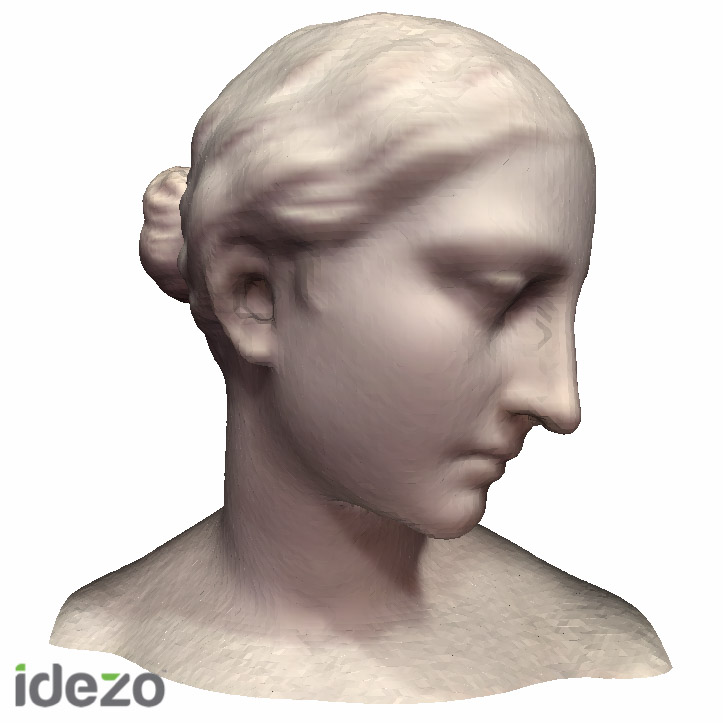Idezo is a small studio that “draws upon unique skill sets to help their clients build solutions and solve problems”. This kind of lateral thinking is proving to be more and more important for companies. One way that co-founder Mark Melnykowycz works on his own skill, that of blending artistic creativity and scientific methodology, is by studying the possibilities opened by portable 3D scanning.
Recently Mark visited the sculpture exhibit at the Detroit Institute of Arts (DIA) armed with an iPad and a Structure Sensor. There, he found that this technology holds great promise for offering a new type of services for cultural projects. While digital 2D photography (allowed in the DIA) can be considered a complete medium for capturing the beauty of 2D artwork, a 3D imaging solution allows for a much better comprehension of sculptures.
For Mark, it was both a technical experiment to help him evaluate how accurate and feasible portable 3D scanning is, as well as a social experiment to understand how people would react to someone 3D scanning works in a museum. Both gave very positive indications as to the possible implementation of these technologies in a museum setting in a relatively short period of time.
First of all, Mark reported that 3D scanning with a Structure Sensor was intuitive and effective, as can be seen by the photos of the models in this article. With some previous experiences using the iPad compatible 3D scanner under his belt, he was able to produce good quality scans of any sculpture with a non-reflective surface, in stone or bronze. He was also able to successfully digitize statues behind glass, encountering stitching issues only in the corner sections of glass case. Choosing the right size of the object to scan also contributed to the overall quality of the capture, where a statue’s head could be acquired with greater resolution and details than a complete body.
From a social experiment standpoint, Mark noticed that people generally understood what he was doing and found it fascinating. This, he obverses, clashes with most people’s general uneasiness with the public use of other reality enhancing and capturing devices, such as Google Glass (which, however, may find wider acceptance in a museum setting).
Finally, Mark delves into the issue of copyright for certain museum pieces. When an acceptable quality 3D scan is acquired, it can be used to reproduce the artworks through 3D printing. This is clearly an issue that will need to be further explored as 3D scanning technologies become more widely available. It might not take long; Intel has already begun incorporating 3D scanners into devices this year and Google Project Tango is getting closer to public release.





